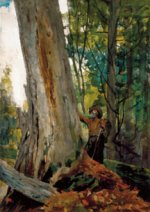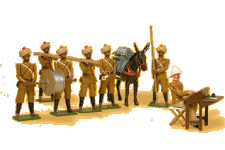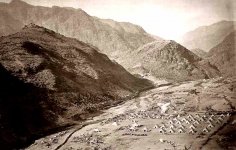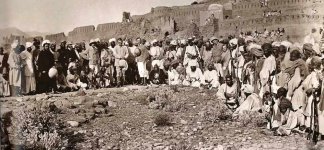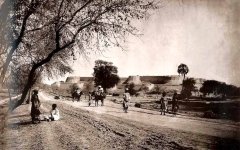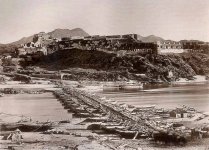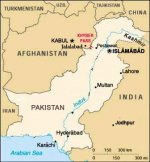PolarBear
Major
- Joined
- Feb 24, 2007
- Messages
- 6,706
As an art historian studying the past, I have always tried to connect what happened in earlier times with the present. For example in 19th C America, the forests in the Adirondacks were already being stripped of their trees by the giant logging corporations of the Gilded Age. Not only politicians such as Teddy Roosevelt lobbied for preservation but contemporary painters such as Winslow Homer created works of art such as the 1894 watercolor "Old Friends" to visually remind Americans that something was being lost. For me these concerns resonate with our own times.
I also find myself sometimes using my toy soldiers to help me understand these connections. I have recently developed an interest in the North-West Frontier (NWF) in the 19th C: Afghanistan-Pakistan-India in order to better understand developments in that region today. So many of the names echo across the centuries: Punjab, Peshawar, Swat, Kandahar, Kabul, and the Khyber Pass, for example. I recently added to my collection a set by William Hocker depicting the Bombay Sappers & Miners Telegraph Section as they appeared in the NWF during the final quarter of the 19th C. Today I found myself looking for visual documentation of the appearance of camps and forts used by the British and their Indian regiments in the area. I came across a site of Photographs of Old Pakistan derived from the book by Omar Khan titled "From Kashmir to Kabul", collects photographs by John Burke and Willian Baker, two 19th C Irishmen who covered the area that now constitutes much of Pakistan. Among the photos posted I found examples of what I was looking for and now know not only how to display my new soldiers but have also gained some historical background to the present conflict:
Photos:
1. Wm. Hocker set 124 Bombay Sappers & Miners Telegraph Section
2. Khyber Pass showing British Encampment 1878
3. Jamrud Fort was built by the Sikh governor of Peshawar, Hari Singh, in 1836. After the British occupied it, they used it to mount campaigns in the Frontier and Afghanistan and designated it a toll collection point for the Khyber Pass. In 1878 the Khyber Rifles militia was raised to protect British troops on the Frontier and Jamrud Fort became its headquarters. 1870
4. Peshawar Fort 1860
I also find myself sometimes using my toy soldiers to help me understand these connections. I have recently developed an interest in the North-West Frontier (NWF) in the 19th C: Afghanistan-Pakistan-India in order to better understand developments in that region today. So many of the names echo across the centuries: Punjab, Peshawar, Swat, Kandahar, Kabul, and the Khyber Pass, for example. I recently added to my collection a set by William Hocker depicting the Bombay Sappers & Miners Telegraph Section as they appeared in the NWF during the final quarter of the 19th C. Today I found myself looking for visual documentation of the appearance of camps and forts used by the British and their Indian regiments in the area. I came across a site of Photographs of Old Pakistan derived from the book by Omar Khan titled "From Kashmir to Kabul", collects photographs by John Burke and Willian Baker, two 19th C Irishmen who covered the area that now constitutes much of Pakistan. Among the photos posted I found examples of what I was looking for and now know not only how to display my new soldiers but have also gained some historical background to the present conflict:
Photos:
1. Wm. Hocker set 124 Bombay Sappers & Miners Telegraph Section
2. Khyber Pass showing British Encampment 1878
3. Jamrud Fort was built by the Sikh governor of Peshawar, Hari Singh, in 1836. After the British occupied it, they used it to mount campaigns in the Frontier and Afghanistan and designated it a toll collection point for the Khyber Pass. In 1878 the Khyber Rifles militia was raised to protect British troops on the Frontier and Jamrud Fort became its headquarters. 1870
4. Peshawar Fort 1860


